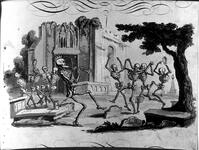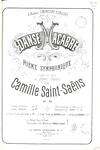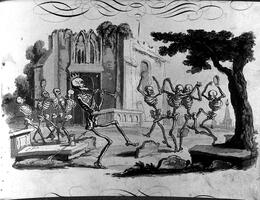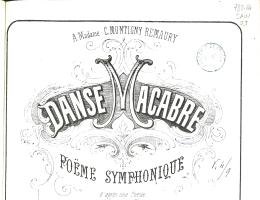Danse macabre
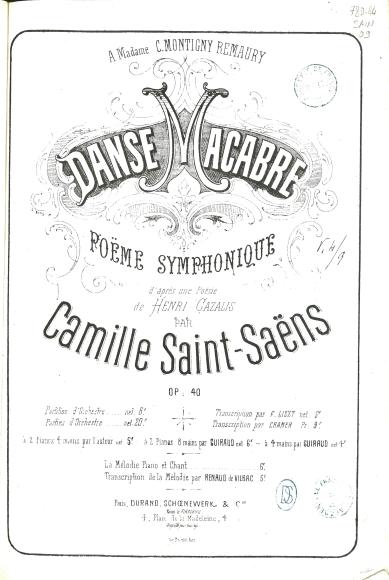
Symphonic poem first performed on 24 January 1875 at the Théâtre du Châtelet in Paris; the work is dedicated to Caroline Montigny-Rémaury.
Danse macabre is the third of the four symphonic poems that Camille Saint-Saëns composed, all of them in the 1870s. Written in 1874, the work is an expanded version of an art song for voice and piano of 1872, setting the poem “Égalité, Fraternité” by his friend Henri Cazalis (1840-1909). For the symphonic poem, Saint-Saëns took up the main themes of the song and added the Dies Irae (a Gregorian chant theme from the Requiem Mass). In terms of instrumentation, he gave much of the vocal part to a solo violin, employing a scordatura tuning with its E string lowered to E flat to create the tritone (the diminished fifth interval known to earlier musicians as the diabolus in musica) that is used as the opening motif of the work, and a xylophone, only recently brought into the symphony orchestra, to imitate the skeletons’ rattling bones. The première of Danse macabre took place on 24 January 1875 at the Théâtre du Châtelet, with Édouard Colonne (1838-1910) conducting. The reviews were at first somewhat mitigated, but the work, often performed in concert after that, subsequently became very popular, and has remained so to this day. “Violinists no longer want their chanterelles tuned otherwise than in E flat!” Saint-Saëns told his publisher, Auguste Durand, in March 1876. The work’s success undoubtedly encouraged him to propose two transcriptions, one for two pianos (1875) and the other for violin and piano (1877), and to insert a quotation from the Danse macabre in the “Fossiles” movement of his Carnaval des animaux (1886). Other composers in turn produced various arrangements of Danse macabre, including the transcription for solo piano by Franz Liszt (1811-1886), which on its publication in 1876 was received with enthusiasm.

